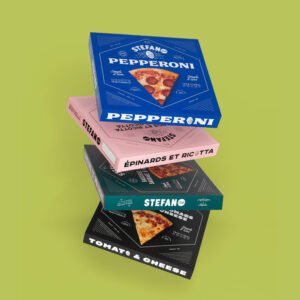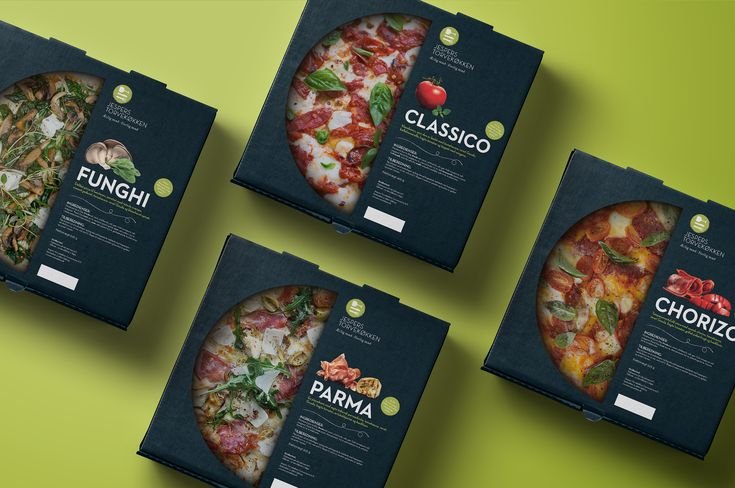Frozen pizza is a staple in many households, combining convenience with comfort food. Yet, what makes a frozen pizza stand out on the grocery shelf isn’t just its flavor but its packaging. Effective frozen pizza packaging does much more than just keep the pizza fresh. It plays a crucial role in attracting consumers, preserving quality, and communicating the brand’s message. In this article, we’ll explore the key elements of frozen pizza packaging and how they impact your pizza experience.
Understanding Frozen Pizza Packaging
Purpose and Functionality
- Preservation: Packaging must keep the pizza fresh by protecting it from freezer burn and maintaining its taste and texture through various protective layers and seals.
- Convenience: Easy-to-open and resealable packaging adds convenience, allowing consumers to store or handle the pizza without hassle, which enhances the overall user experience.
Design Elements of Frozen Pizza Boxes
Visual Appeal
- Eye-Catching Graphics: Vibrant, high-quality images of the pizza attract attention and give a clear representation of what consumers can expect once they open the box.
- Branding: Prominent brand logos and distinctive colors help in creating brand recognition and standing out in a crowded freezer aisle.
Informational Content
- Ingredient Transparency: Clear labeling of ingredients and nutritional information is essential for consumers who are conscious about their dietary choices or have allergies.
- Cooking Instructions: Easy-to-follow instructions ensure that the pizza is cooked to perfection, providing a hassle-free preparation experience.
Types of Frozen Pizza Packaging
Box Packaging
- Cardboard Boxes: Common and cost-effective, these boxes often come with a protective inner lining to preserve freshness and prevent freezer burn.
- Recyclable Options: Some brands use recyclable cardboard to appeal to environmentally conscious consumers, promoting sustainability along with convenience.
Plastic Wrap and Tray
- Plastic Wrap: This method involves wrapping the pizza in plastic to protect it from freezer burn while maintaining its shape and quality.
- Plastic Trays: Often used in conjunction with plastic wrap, trays help keep the pizza’s shape and make it easier to handle during cooking and storage.

Innovative Packaging Solutions
Vacuum-Sealed Packaging
- Extended Freshness: Vacuum-sealing removes air to prevent freezer burn and extend the pizza’s shelf life, ensuring a fresher taste when it’s time to cook.
- Compact Storage: This method reduces the pizza’s volume, allowing for more efficient use of freezer space and making it easier to store multiple pizzas.
Resealable Bags
- Reusable Convenience: Some brands offer resealable bags that make it easy to store leftover pizza slices, ensuring they remain fresh and easy to access.
- Space-Saving: These bags are often more compact than boxes, saving freezer space and reducing packaging waste.
Impact of Packaging on Consumer Experience
First Impressions
- Attractiveness: Well-designed packaging catches the eye and can influence purchasing decisions. A visually appealing box with high-quality images and engaging design can sway consumers.
- Trust and Quality: High-quality packaging signals a commitment to product quality and can enhance consumer trust, making them more likely to try or stick with a brand.
Functional Benefits
- Ease of Use: Packaging that’s easy to open and handle improves the user experience, especially when dealing with frozen products that can be cumbersome.
- Storage and Handling: Proper packaging helps in storing and handling the product more efficiently, ensuring the pizza maintains its quality from the freezer to the oven.
Sustainability Considerations
Eco-Friendly Packaging
- Recycled Materials: Many brands are turning to recycled materials to minimize environmental impact and appeal to eco-conscious consumers.
- Biodegradable Options: Some companies are experimenting with biodegradable packaging materials to reduce waste and improve their environmental footprint.
Challenges and Innovations
Balancing Freshness and Sustainability
- Innovative Materials: Companies are investing in new materials that balance freshness with eco-friendliness, such as compostable films and sustainable liners.
- Consumer Preferences: Understanding consumer preferences for packaging can help brands innovate effectively while meeting both practical and environmental needs.
Future Trends in Frozen Pizza Packaging
Smart Packaging Technologies
- QR Codes and Apps: Integrating QR codes and app functionalities into packaging can provide additional information, recipes, and interactive features to enhance the consumer experience.
- Temperature Sensors: Advanced packaging might include temperature sensors to ensure the product remains at optimal conditions throughout its shelf life.
Personalization
- Custom Designs: Brands might offer customizable packaging options for special occasions or promotions, allowing consumers to personalize their pizza experience.
- Interactive Elements: Packaging with interactive features like games or augmented reality can engage consumers and make the product more memorable.
Conclusion
Frozen pizza packaging is more than just a way to keep your pizza safe; it’s an essential part of the product that influences purchasing decisions, preserves quality, and enhances the overall experience. With innovations in design, materials, and technology, frozen pizza packaging continues to evolve, offering consumers convenience and a touch of fun in their daily meals. Next time you grab a frozen pizza from the store, take a moment to appreciate the thought and creativity that went into its packaging!
Read the latest blogs here




